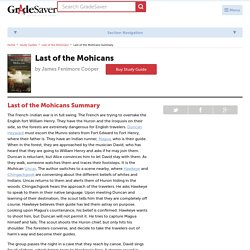

Native American Cultures - Native American History. Many thousands of years before Christopher Columbus’ ships landed in the Bahamas, a different group of people discovered America: the nomadic ancestors of modern Native Americans who hiked over a “land bridge” from Asia to what is now Alaska more than 12,000 years ago.

In fact, by the time European adventurers arrived in the 15th century A.D., scholars estimate that more than 50 million people were already living in the Americas. Of these, some 10 million lived in the area that would become the United States. As time passed, these migrants and their descendants pushed south and east, adapting as they went. In order to keep track of these diverse groups, anthropologists and geographers have divided them into “culture areas,” or rough groupings of contiguous peoples who shared similar habitats and characteristics.
The Arctic The Inuit and Aleut had a great deal in common. Native Americans - Origins. Christopher Columbus discovered America in 1492 - Wrong!

Christopher Columbus was the first European to set foot in the country that was to be called America - Right! There is a huge difference between the two statements above. The North American continent had been inhabited for thousands of years before Europeans 'discovered' it and settled there. It is believed that the first people to inhabit North America were Asian in origin. It is believed that they made the journey from Asia to Alaska by crossing the Bering Strait during the Ice Age (at least 10,000 years ago) The picture (above) shows the location of the Bering Strait and an artist’s impression of travellers crossing during the Ice Age Over a period of time these people migrated further and further south. The Arrival of Europeans When the first Europeans arrived in North America they believed they were in India and named the natives Indians, the name was to stick for nearly 500 years.
Native Americans - Tribes/Nations. Early Indian Tribes East of the Mississippi, 1600. Last of the Mohicans Summary. The French-Indian war is in full swing.

The French are trying to overtake the English fort William Henry. They have the Huron and the Iroquois on their side, so the forests are extremely dangerous for English travelers. Duncan Heyward must escort the Munro sisters from Fort Edward to Fort Henry, where their father is. They have an Indian runner, Magua, who is their guide. When in the forest, they are approached by the musician David, who has heard that they are going to William Henry and asks if he may join them. The group passes the night in a cave that they reach by canoe. The foresters lead the group away, stopping briefly for dinner. In the fort a few days later, Duncan walks about, wondering how they can keep fighting with such inadequate manpower. Later that day the foresters return with Munro and Duncan to survey the damage and to try to detect Magua's trail.
Suddenly there is a big hullabaloo outside the meeting house. When all deceit is discovered, the tribe is furious. Mayflower Myths - Thanksgiving. Fact: The original feast in 1621 occurred sometime between September 21 and November 11.

Unlike our modern holiday, it was three days long. The event was based on English harvest festivals, which traditionally occurred around the 29th of September. After that first harvest was completed by the Plymouth colonists, Gov. William Bradford proclaimed a day of thanksgiving and prayer, shared by all the colonists and neighboring Indians. In 1623 a day of fasting and prayer during a period of drought was changed to one of thanksgiving because the rain came during the prayers. Full text of "american indians" - Internet Archive.